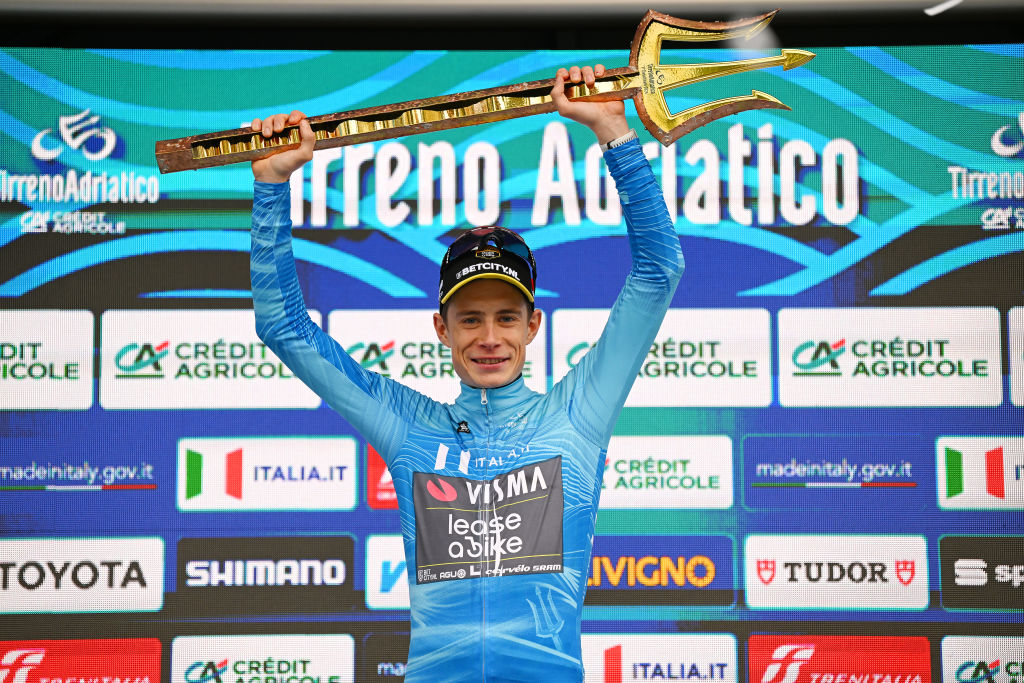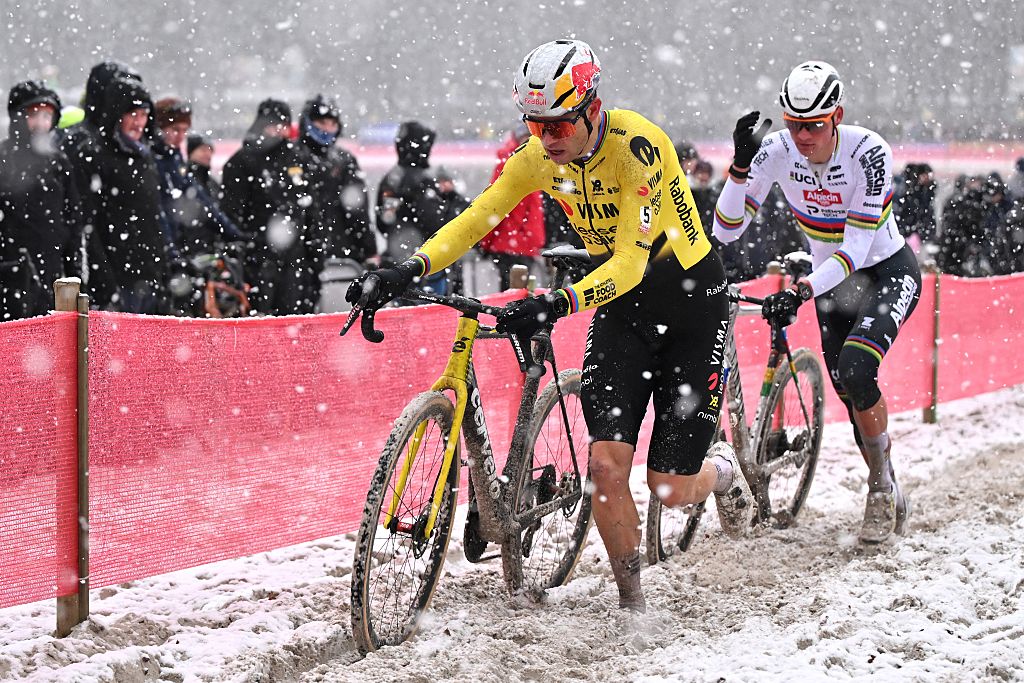Tirreno-Adriatico trident trophy: The history and reasons behind the unique metre-tall trident
Winner of 'Race of Two Seas' hoists unique trophy in San Benedetto del Tronto after Coast Guard 'recovery' each year

What could be better than winning one race, Tirreno-Adriatico, to reign over two coastlines and take hold of a giant three-pronged spear as master of the seas? The large, bronze-inlaid trident is one of several maritime themes tied to the ‘Race of Two Seas’, and the last 14 editions have showcased the iconic Sea Master Trophy.
The one-metre long trident was first introduced in 2010, produced from brass and aluminum materials with intricate details, and weighs a hefty 10 pounds (5 kg). Each year a fresh model is made by the same Italian company, Penello Mario SRL, which also crafts the Trofeo Senza Fine for the Giro d’Italia.
Along with the piece of pavé presented to the winner of Paris-Roubaix, the trident from Tirreno-Adriatico has garnered instant distinction in the world of cycling. This piece was created for its representation as a tool of power from classical mythology, used by rulers of salt and fresh waters.
The Roman god Neptune was depicted with a trident to illustrate his authority over water, and in the Greek world it was Poseidon. In either case, the legendary leader could use the object to create water sources, disturb or quiet storms, shake the earth to move water and perform other powerful wonders with water.
And so the winner of Tirreno-Adriatico receives his trident as the ruler of two seas, but there is a special ceremony each year for the retrieval of the award before the presentation. The Italian Coast Guard undertakes the task of reclaiming the trident ceremoniously from the sea and bringing it back to shore for the official presentation to the new ‘ruler’.
The theme of water runs deep with the WorldTour stage race and continues with the leader’s jersey, the maglia azzurra, which is a deep blue like the ocean, of course.
Last year Primož Roglič won three stages and the overall for Jumbo-Visma, earning the second trident of his career. He took the top prize away from two-time winner Tadej Pogačar (UAE Team Emirates). Since the now-signature trident was introduced, Vincenzo Nibali and Nairo Quintana have been the only other riders to earn a matched pair.
The latest race content, interviews, features, reviews and expert buying guides, direct to your inbox!
Tirreno-Adriatico has grown in prominence among teams for the warmer climate than Paris-Nice and for the geographic terrain of central Italy, with climbs in the Apennines, that provide a tuneup for the Giro d’Italia, as well as Milan-San Remo.
The first edition in 1966 departed from Rome and ended on the Abruzzese coast in Pescara with three stages. Since then, the race expanded and crossed other parts of southern Italy, including the region around Rome and even Naples.
The past 22 years have seen the race consistent with a route between the Tyrrhenian coast of the Mediterranean to the town of San Benedetto on the central Adriatic coast.

Jackie has been involved in professional sports for more than 30 years in news reporting, sports marketing and public relations. She founded Peloton Sports in 1998, a sports marketing and public relations agency, which managed projects for Tour de Georgia, Larry H. Miller Tour of Utah and USA Cycling. She also founded Bike Alpharetta Inc, a Georgia non-profit to promote safe cycling. She is proud to have worked in professional baseball for six years - from selling advertising to pulling the tarp for several minor league teams. She has climbed l'Alpe d'Huez three times (not fast). Her favorite road and gravel rides are around horse farms in north Georgia (USA) and around lavender fields in Provence (France), and some mtb rides in Park City, Utah (USA).
